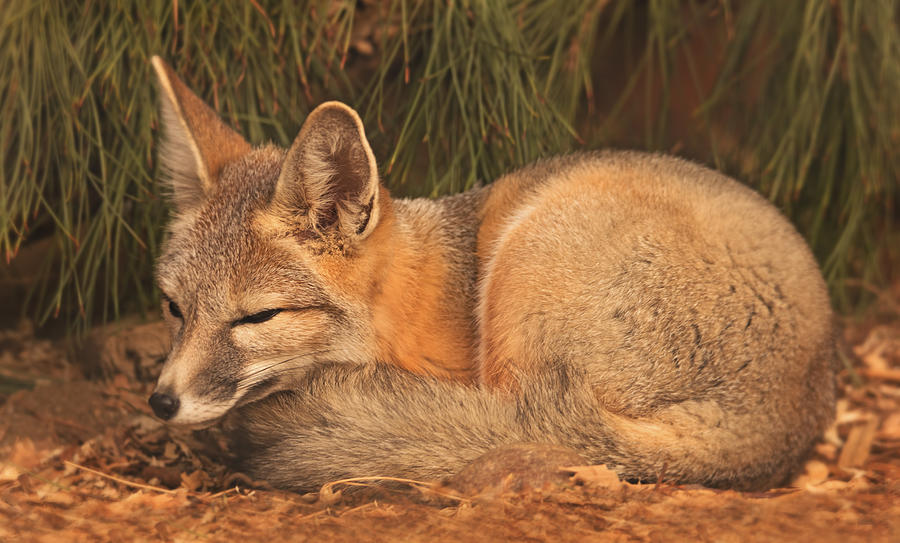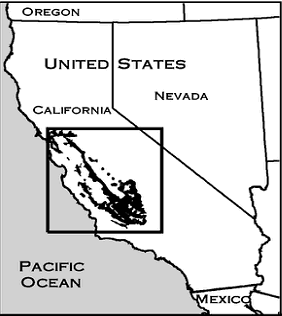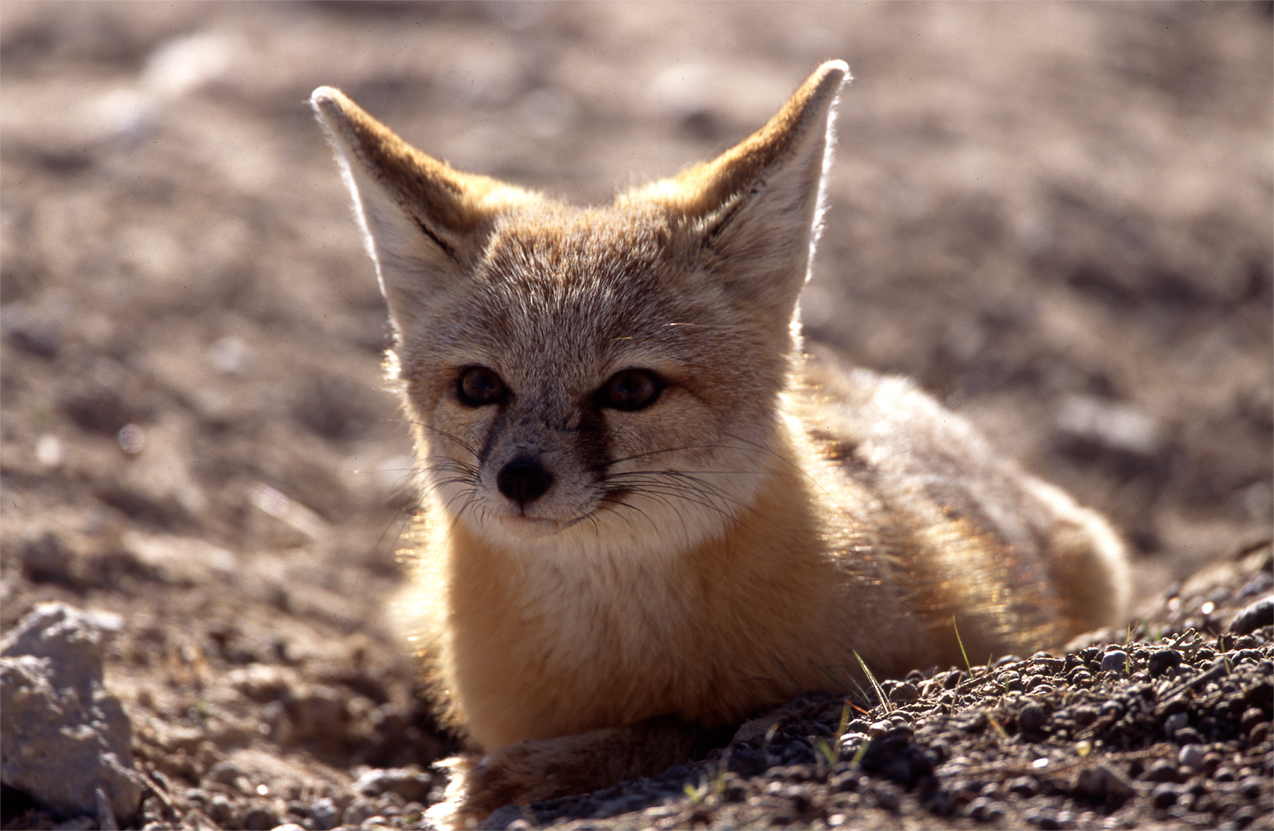The Story of the San Joaquin Fox - Ava Mattis
The Story of the San Joaquin Kit Fox
By: Ava Mattis
 |
| Pictured
above is a sleeping San Joaquin Kit Fox photographed by Brian Cross (Cross).
Description and
Ecology
The San Joaquin kit fox
is the smallest candid species in North America. Fully-grown males weigh only 5
pounds and are about 12 inches tall and 20 inches long. They are long and slim
mammals with pointed noses, large ears that sit close together, and bushy
tails. San Joaquin kit foxes’ coats vary depending on the season, but are
typically a tan, grey, or orange. (San Joaquin Kit Fox).
San Joaquin kit foxes have
a life expectancy of only about 7 years, so they mate and reproduce at the
young age of 1 or 2. They typically mate in winter, and then females give birth
to anywhere from 4-7 kin. Their young usually depart from the family only four
or five months after birth, although in some rare cases they may stay with
their mother for a year after birth to help with the next year’s reproduction.
Kit foxes are nocturnal
creatures, meaning they sleep in the day and are active at night. They live in
underground dens where they rest during the day to evade predators and avoid
temperature extremes by conserving moisture. Kit foxes change dens often during
the summer months and sometimes change dens up to 24 times in a single year.
These creatures hunt and consume animal prey such as rabbits, snakes, rodents,
or insects (“Kit Fox – San Joaquin Valley Population").
Geographic and Population Changes
The kit fox needs arid
land in order to successfully reproduce and live. Additionally, because their
dens provide them shelter from predators, it is imperative that they live near
loose-textured soils good for burrowing. Because of this, San Joaquin kit foxes
inhabit grassland areas in the San Joaquin Valley. Before 1930, these animals
roamed this valley extensively, with its range extending from Kern County all
the way to Contra Costa County. However, in the 1930s this range was reduced in
half. These geographic changes occurred due to habitat destruction because of
the construction of new developments. Now the San Joaquin Valley kit fox lives
in small, fragmented habitats that lie scattered across the valley (“San
Joaquin Kit Fox”). These geographic changes also had profound effects on their
population numbers which have decreased drastically.
Above is a picture depicting the range of the San Joaquin kit fox ("Keep Me Wild: Kit Fox").
Listing Date and Type
Because
of this decline in their population numbers, the San Joaquin kit foxes were
classified as endangered in 1967 on the US Endangered Species list. A few years
later in 1971, California added them to a state list of threatened species. A
recovery plan was written for these foxes in 1998 and is listed on the website
for US Fish and Wildlife Services (“San Joaquin Kit Fox”).
Cause of Listing and
Main Threats
Some reasons for the
listing of the San Joaquin kit fox are natural. Many kit foxes die because they
are unable to defend against predator coyotes. Additionally, there may be a
factor of competition because of non-native red foxes that inhabit similar
areas.
However, the leading
threats for San Joaquin kit foxes are human caused. Humans directly kill kit
foxes by hunting, trapping, or accidentally hitting the animals as they cross
major highways. However, a much more primary threat we pose to these
defenseless creatures is habitat destruction or fragmentation. Kit foxes’ most
favorable habitat areas, grasslands, are also ideal for developmental areas
because there isn’t much present in the area that needs to be cleared for
construction. The destruction of these habitats is extremely detrimental to San
Joaquin kit foxes because it reduces their carrying capacity and their prey in
the area (“Recovery Plan”).
An illustration of the San Joaquin kit fox ("L. San Joaquin Kit Fox")
Recovery Plan
For the purposes of the
US Fish and Wildlife’s recovery plan for the San Joaquin kit fox, this animal
is considered to be an umbrella species. This choice is because the kit fox is
present in almost all of the natural communities used by other species protected
in the plan. Hence, by protecting the San Joaquin kit fox, the US Fish and
Wildlife Service will also be protecting a whole umbrella of other endangered
species.
The main conservation
efforts that have been enacted so far aim to create more habitat for the San
Joaquin kit fox. One of the most important land acquisitions so far has been
the purchase of 60,000 acres of land around the area of Stanislaus and Santa
Clara counties. Also, some lands have been acquired as the result of
mitigations from development projects in the area.
As for the recovery
plan, it entails focusing efforts on three core populations and then conserving
9-12 more satellite populations of kit foxes. In the plan, a core population is
defined as one that has a high concentration of foxes and therefore anchors the
population, while a satellite population has fewer foxes in it.The plan will
help these scattered populations by creating links between them so they can
move back and forth between fragmented habitat sites.
Additionally, the
American Farmland Trust will provide farmers with monetary compensation or
incentives for conserving habitats that will house San Joaquin kit foxes. For
example, some farmers will receive money for converting old farmland into new
habitats to house these kit foxes (“Recovery Plan”).
What can you do?
There are many steps
that we can take to help preserve and increase populations of the San Joaquin
kit fox. They are listed below.
Other Resources
Listed below are some
helpful links to websites to further aid your introduction to the endangered
species of San Joaquin kit foxes.
The San Joaquin kit fox thanks you for your efforts and interest in conservation ("Adaptations").
Works Cited
Cross, Brian. “San
Joaquin Kit Fox.” FineArtAmerica.com,
fineartamerica.com/featured/3-san-joaquin-kit-fox-brian-cross.html.
“Endangered Species
Recovery Plan.” CSU Stanislaus,
esrp.csustan.edu/gis/maps/sjkfrange.png.
“Keep Me
Wild: Kit Fox.” California Department of Fish
and Wildlife, www.wildlife.ca.gov/Keep-Me-Wild/Kit-Fox.
“Kit Fox - San Joaquin
Valley Population.” NatureServe Explorer, Nov. 2016,
explorer.natureserve.org/servlet/NatureServe?searchName=Vulpes+macrotis+mutica.
“L. San Joaquin Kit Fox
(Vulpes Macrotis Mutica),” Endangered Species Recovery Program. esrp.csustan.edu/publications/pubhtml.php?doc=sjvrp&file=chapter02L00.html.
“Map of Kit Fox Populations.” IUCNRedList,
maps.iucnredlist.org/map.html?id=41587.
“Recovery Plan for
Upland Species of the San Joaquin Valley.” US Fish and Wildlife
Services, 1998, https://ecos.fws.gov/docs/recovery_plan/980930a.pdf.
“Survival Adaptations - San Joaquin Kit Fox.” Google Sites,
sites.google.com/a/stu.sandi.net/san-joaquin-kit-foxnp2017/survival-adaptations.
|





Your blog on the San Joaquin Fox is very interesting! I really liked at the end how you included a picture of the fox thanking us for efforts and interest in their conservation. It was really nice to have clear steps in what we can do to help the fox, it makes it appear that the task is not as daunting as it is. It will help people who feel overwhelmed to have clear steps to help the recovery. - Anna Luehrs
ReplyDeleteI loved learning about the American Farmland trust and how this encourages farmers to help these fox populations. This sounds like one of the best efforts as long as it is beneficial enough for farmers to contribute their efforts. - Brooke Lochhead
ReplyDeleteThe idea of a umbrella species is really interesting, by saving this one species you can save all the other ones under the umbrella. i like that they have started to take concrete steps, like buying land and helping implement the American Farmland Trust.
ReplyDelete_Shea Menzel
These foxes are so cute! I really love how your blog is organized; its clear that you put time into formatting it. It's disappointing another species as a direct target of human activities but interesting that the American Farmland Trust is offering compensation to farmers to protect these animals. - Hannah Lee
ReplyDeleteI loved that you included captions to describe your images rather than simply citing the website! It makes it more engaging for the reading to know what's going on in the pictures. I thought it was interesting that they change dens so often during their lifetime and I'm curious as to why they do.
ReplyDelete- Ashley Lam
The captions you chose to include were a simple but very effective addition. I think they really amplified the value of the pictures you chose to include. I also enjoyed how you expanded from the ideas in class about how your species is an umbrella species. - Alijah Maldonado
ReplyDeleteI liked how you bulleted the "What you can do" section because it made it very simple and clear for the reader on how they can help the San Joaquin Fox. Your photos and captions were a nice addition as well to give a more visual look on what you were talking about. -Sydney Meertens
ReplyDeleteIt really seems that the main concern for many of the species I am learning about is habitat destruction or fragmentation, all due to humans. The blog is very interesting and concise and I will do my best to follow your suggestions for what I can do, especially by driving with caution. - Samary Mayo
ReplyDeleteFirst of all, I enjoyed the images you chose because I believe they will make people appreciate them more due to their appearance. Also, the way you emphasized the what you can do portion is a great idea. - Scott Martin
ReplyDelete